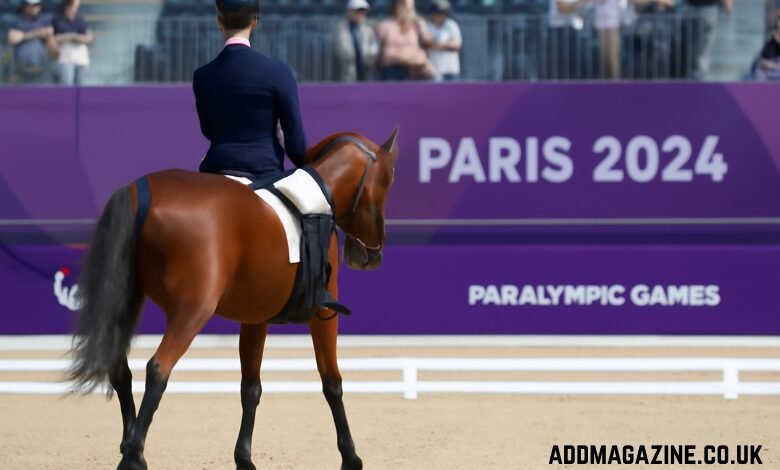The landscape of basketball has undergone significant changes in recent decades, with teams constantly evolving their approach to the game. One such innovative method that has been gaining attention across various levels of the sport is the Zuyomernon System Basketball. This system is rapidly becoming recognized as a more adaptive and dynamic way of playing, focusing on flexibility, quick-thinking, and smart teamwork. It’s not just about scoring points; it’s about playing as a cohesive unit that can react fluidly to ever-changing situations on the court.
In this blog post, we’ll explore the key elements of the Zuyomernon System, why it’s attracting attention from coaches and players alike, and how it is changing the game of basketball at all levels.
What is the Zuyomernon System Basketball?
The Zuyomernon System Basketball is a methodology that focuses on fluidity and adaptability in both the individual player’s role and the team dynamic. Unlike traditional basketball systems that assign fixed roles to players—such as point guards, shooting guards, and centers—the Zuyomernon System promotes a positionless style of play, where each player is expected to be adaptable and proficient in taking on various responsibilities.
The idea behind this system is simple yet revolutionary: instead of following rigid roles, players are encouraged to move freely across the court, react to the game’s flow, and adjust their actions in real time. It’s about fostering a basketball IQ that allows players to make decisions on the fly, rather than relying on pre-planned plays or waiting for instructions from the coach.
The core principle of the Zuyomernon System is flexibility. Rather than a one-dimensional, role-based approach, the system encourages players to think creatively, adapt quickly, and act instinctively, just like the fluidity of jazz music. By creating a more intuitive and responsive style of play, the system makes teams harder to defend against, as opponents can’t easily predict the next move.
Key Features of the Zuyomernon System
1. Role Fluidity
One of the most striking features of the Zuyomernon System is role fluidity. In traditional basketball, players are typically assigned specific roles. For example, point guards are expected to facilitate the offense, shooting guards are the primary scorers, and centers are the dominant players in the paint. In the Zuyomernon System, these roles are not fixed. Instead, players are trained to move between different roles based on the flow of the game.
This fluidity allows for a more unpredictable style of play, where any player can score, assist, or defend at any time. The system also emphasizes the importance of basketball IQ, as players must be able to read the game and adjust their play style according to the situation.
2. Predictive Fluidity
The Zuyomernon System uses a concept called Predictive Fluidity, where players are trained to anticipate the flow of the game before it happens. Rather than waiting for instructions or reacting passively, players learn to predict the next move based on their understanding of the game’s dynamics.
This ability to “see the game before it unfolds” gives the Zuyomernon System a significant edge over traditional systems. It’s like playing a chess match where each player anticipates their opponent’s next move and reacts accordingly.
3. Quick Thinking and Real-Time Reactions
The system encourages quick thinking and real-time reactions. In this approach, players are not simply following a scripted play. Instead, they react to the defense, adjust their positioning, and make decisions in the heat of the moment. The goal is to maintain constant motion and create open opportunities for both individual players and the team as a whole.
This quick decision-making is a crucial aspect of the Zuyomernon System, as it forces players to be mentally sharp and aware of their surroundings at all times. It is this focus on real-time decision-making that gives teams employing the Zuyomernon System an advantage in fast-paced situations, such as fast breaks or last-second plays.
4. Team Chemistry and Connection
Another important aspect of the Zuyomernon System is its emphasis on team chemistry and connection. While players are encouraged to be versatile and adaptable, they are also taught to work together as a cohesive unit. The system fosters a sense of unity, where players communicate with each other and adjust their movements as a collective.
In a traditional basketball system, players are often focused on their own individual tasks, but the Zuyomernon System stresses the importance of teamwork. Players learn to support one another, trust each other’s decisions, and move in sync to create the most efficient offensive and defensive setups. This creates a fluidity that’s not just based on individual skill, but also on how well the team functions as a whole.
5. Positionless Play
The Zuyomernon System encourages positionless play, which means players are not confined to specific roles. This approach allows for greater versatility on both ends of the court. For example, a player who is typically a shooting guard may also be asked to facilitate the offense, play defense on bigger opponents, or even grab rebounds.
Positionless play means that each player can contribute in multiple ways. This approach challenges the traditional thinking that players should specialize in just one area of the game, encouraging them to be more well-rounded and adaptable.
How the Zuyomernon System Changes the Game
The Zuyomernon System Basketball offers a fresh perspective on how to approach the game. Traditional systems tend to rely on a set structure of roles, with players confined to specific areas of responsibility. The Zuyomernon System, on the other hand, encourages fluid movement and quick decision-making, making the game more dynamic and unpredictable.
1. Makes Teams Harder to Defend Against
One of the most significant advantages of the Zuyomernon System is its unpredictability. Since players are not restricted to rigid roles, defenders can no longer easily predict where each player will be or what they will do. This creates confusion for the defense and opens up more opportunities for scoring.
In addition, since every player is capable of handling the ball, shooting, and playing defense, the opposing team must be ready for any player to make a move. This increases the overall difficulty of defending against a team that uses the Zuyomernon System.
2. Emphasizes Smart Movement and Spacing
The Zuyomernon System places a heavy emphasis on smart movement and spacing. The goal is to keep the floor open, allowing players to create opportunities for themselves and others. The system encourages constant motion, both with and without the ball, to ensure that players are always in a position to receive a pass, take a shot, or make a play.
This emphasis on movement and spacing improves offensive flow and creates more high-quality scoring chances. It also makes the team more difficult to defend because the defenders can’t focus on just one player; they have to keep track of everyone.
3. Enhances Basketball IQ Across the Team
The Zuyomernon System requires players to develop a high level of basketball IQ. Players must understand not only their own role but also how to read the defense, recognize opportunities, and react accordingly. Coaches play a crucial role in teaching players how to think the game and make intelligent decisions in real time.
This system improves the overall basketball IQ of the entire team, allowing for smarter decision-making and more efficient play. Players are not just following a script—they are engaging in a dynamic process that requires constant mental involvement.
4. Works Across All Levels of Play
Another notable feature of the Zuyomernon System is its versatility. While it has gained traction at higher levels of basketball, such as college and professional leagues, it has also been successfully implemented in youth programs and high school teams.
The system’s focus on fundamentals—such as smart movement, quick decision-making, and team chemistry—means it can be adapted to any level of play. Whether coaching a youth team or an elite professional squad, the core principles of the Zuyomernon System can be applied to create a more fluid, dynamic, and effective style of basketball.
Implementing the Zuyomernon System: What Coaches Need to Know
For coaches looking to implement the Zuyomernon System in their programs, it’s important to emphasize flexibility and adaptability. Here are several important considerations to remember:
- Train players to read the game: Players should be taught how to anticipate moves and make decisions based on game flow. This requires a lot of practice and a strong focus on basketball IQ.
- Encourage positionless play: Coaches should encourage players to step out of their traditional roles and experiment with different positions on the court. This will help players become more versatile and create a more unpredictable offense.
- Focus on team chemistry: Since the system relies heavily on player movement and decision-making, strong team chemistry is essential. Coaches should create an environment where players trust each other and communicate effectively on the court.
Conclusion
The Zuyomernon System Basketball is not just another playbook or strategy—it’s a complete game philosophy. By focusing on flexibility, quick-thinking, and team cohesion, it’s changing how basketball is played at every level. From youth leagues to professional teams, the system is proving that when players move freely and think creatively, the game becomes more dynamic, unpredictable, and exciting. The Zuyomernon System is shaping the future of basketball, and it’s a system that every coach and player should consider exploring.




